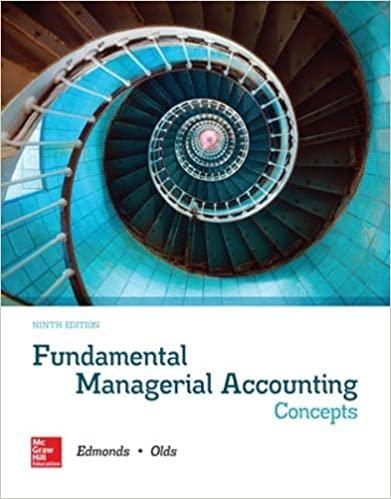Question
During the prior years' audits, Smith used simple variables sampling in performing tests of controls on Golf's accounts receivable. For the current year Smith decided
During the prior years' audits, Smith used simple variables sampling in performing tests of controls on Golf's accounts receivable. For the current year Smith decided to uses Probability Proportional to Size (PPS) sampling in confirming accounts receivable, because PPS sampling uses each account in the population as a separate sample unit. Smith expected to discover many overstatements, but assumed that the PPS sample still would be smaller than the sample size of a simple variables sampling population. Smith reasoned that the PPS would automatically result in a stratified sample, because each account would have an equal chance of being selected for confirmation.
Additionally, the selection of negative balances (unusual and an abnormal balance for accounts receivable) would be facilitated without any additional inputs. Smith computed the sample size using the risk assessment of incorrect acceptance, the total recorded book amount of the receivables, and the number of misstated accounts allowed.
Smith divided the total recorded book amount of the accounts receivable (A/R) by the sample size to determine the sampling interval. Smith then calculated the standard deviation of the dollar amounts selected for evaluation of A/R.
Smith calculated a sample size of 60, and the sampling interval was determined to be $10,000. However, only 58 accounts were selected because 2 accounts were so large that the sampling interval caused them to be selected twice. Smith then sent confirmation requests to 55 of the 58 customers selected in the sample. Three of the selected each had insignificant balances of $20 or under. Smith ignored these as minimus and used this exclusion opportunity to select the three largest accounts that had not hit the sample. Each of these accounts had balances in excess of $7,000 so Smith then sent confirmations to these three as well.
When the confirmations were returned two differences were revealed. One account with an audited balance of $3,000 had been recorded at $4,000. Smith projected this to be a $1,000 misstatement. Another account with an audited balance of $2,000 had been recorded at $1,900. Smith did not count the $100 difference, because the stated purpose of the test was to determine and detect overstatements, not understatements.
In evaluating the sample results, Smith determined that the accounts receivable balance was not overstated, because the projected misstatement was less than the allowance determined for the sampling risk.
Prepare a written report in a format that you would present to your boss in a real world situation that describes each incorrect assumption, statement, and inappropriate application of good sampling techniques in Smith's procedures. Support your work with appropriate research.
Step by Step Solution
There are 3 Steps involved in it
Step: 1

Get Instant Access to Expert-Tailored Solutions
See step-by-step solutions with expert insights and AI powered tools for academic success
Step: 2

Step: 3

Ace Your Homework with AI
Get the answers you need in no time with our AI-driven, step-by-step assistance
Get Started


